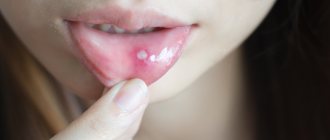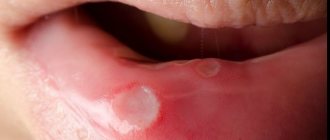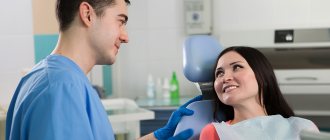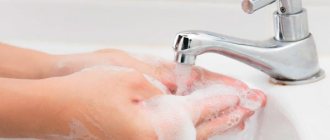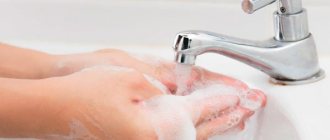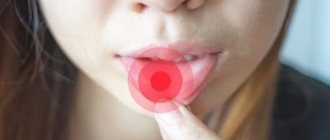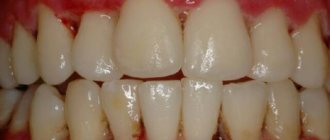Why does lymphadenitis occur?
Like any inflammation, lymphadenitis occurs due to the activity of bacteria: streptococci and staphylococci. The causes of submandibular lymphadenitis are diseases of the oral cavity and infection that enter directly into the lymph nodes as a result of diseases such as:
- caries, pulpitis, periodontitis;
- gum disease;
- chronic diseases (for example, tonsillitis);
- syphilis bacteria;
- tuberculosis bacillus;
- external infections that enter the body as a result of injury.
Causes
To understand the disease, you need to understand the main causes of lymphadenitis, which can occur in men, women and children. Lymphadenitis in adults is formed due to exposure and active reproduction of staphylococci and streptococci. The cause of the disease is also their breakdown products and released toxins. They penetrate the lymph by contact, lymphogenous and hematogenous routes.
As a result of infection, the infection quickly adapts to new conditions, begins its active reproduction and spread throughout the body.
How to recognize lymphadenitis?
The inflammation initially develops asymptomatically. But soon, characteristic signs of lymphadenitis appear:
- enlarged lymph nodes under the lower jaw, pain when touched;
- redness of the skin at the site of inflammation;
- swelling;
- attacks of throbbing pain;
- insomnia;
- difficulty swallowing;
- heat;
- weakness;
- increase in the level of leukocytes in the blood.
Of course, these symptoms do not appear in 1 day. And many people ignore the appearance of mild pain. But if you do not consult a doctor at this time, the picture of the disease will become obvious in just 3 days. The lymph nodes will become inflamed, swollen, and the edema will gradually cover the entire submandibular surface. Patients become lethargic, complain of fatigue, weakness, and high fever. They cannot eat because the inflammation prevents them from opening their mouth normally and sleeping due to pain and fever.
If you continue to ignore the symptoms and postpone a visit to the doctor, the inflammation will become purulent, which will result in blue swelling and increased pain. To prevent this from happening, you should contact a dental surgeon at the DaVinci aesthetic dentistry studio.
The sooner the patient contacts the dentist, the easier it is to eliminate the infection. But many people themselves try to diagnose themselves and choose treatment, which leads to the spread of inflammation and aggravation of the above symptoms. Treating the disease in advanced stages is more difficult and takes longer.
Signs of inflammation of the submandibular lymph nodes
How the disorder manifests itself depends on how far the disease process has progressed. If you do not carry out the necessary therapeutic measures, one stage will quickly pass into another.
First stage
The size of the lymph nodes changes very slightly, but the person already feels that they hurt when pressed. Discomfort occurs when turning the head. Body temperature often rises and a sore throat appears. A tickle or dry, unproductive cough is annoying. Pain occurs only on one side of the neck or on both sides at once. The first case is more likely if it is a viral disease.
Second stage
It is called “acute lymphadenitis”. Now the lymph node can be distinguished visually - it becomes convex and protrudes forward. Externally it resembles a subcutaneous ball. Its diameter reaches three centimeters, but can be more impressive.
The node is painful to the touch. Because of this, it is difficult for the patient to turn and tilt his head, and open his mouth wide. The mobility of the upper and lower jaw is significantly limited.
The pain may radiate to the cheek or ear. Body temperature increases. Overall performance decreases.
Third stage
Called purulent lymphadenitis. Here, the inflammatory process even affects structures adjacent to the lymph node. The patient complains of pain in the throat, collarbone, armpit, and head. The nerve endings of the teeth may become inflamed. Then acute toothache occurs.
Pus formed in lymphoid tissues consists mainly of necrotic cells. If it gets into the blood (and such a possibility always exists), the outcome can be extremely unfavorable, so the inflammatory process should not be started.
Patients can understand that the submandibular lymph node is inflamed and needs treatment as soon as possible by the following signs:
- the “ball” enlarges and becomes red or bluish;
- every day it becomes more dense and solid;
- the skin located above the lymph node takes on a red tint and is hot to the touch;
- the lower jaw area swells.
How to cure lymphadenitis?
The first thing a doctor does is determine the cause of the disease and eliminate it. If the source of infection is the oral cavity, then complete sanitation is performed and antibiotics are additionally prescribed. They will help in the early stages of the disease. The main thing is to strictly follow the treatment regimen prescribed by the doctor. But in difficult cases, when pus has accumulated in the lymph nodes, the dentist makes an incision, releases the pus and installs drainage.
In addition to rinsing, the dentist may prescribe compresses with ointments (heparin, troxevasin, etc.). Physical therapy may be needed.
Recently, many have become suspicious of antibiotics, considering them harmful to the body. But it is even more harmful to neglect the disease, and lymphadenitis cannot be cured without antibiotics. The period of taking antibiotics is from 10 to 14 days. During this time, rinses and compresses will reduce the inflammatory process in the lymph nodes, and a course of ceftriaxone or ampicillin will stop the development of inflammation.
Routes of infection
The root cause of a secondary disease can be:
- trophic ulcers;
- osteomyelitis;
- caries;
- otitis;
- flu;
- tonsillitis;
- angina;
- tuberculosis;
- gonorrhea;
- plague;
- anthrax;
- syphilis;
- tularemia.
Therefore, if you have the diseases listed above, then try to eliminate them as soon as possible. This will help avoid secondary infection, which is quite difficult to fight.
Is it possible to use traditional methods for treatment?
The craze for traditional medicine is bearing fruit. People are trying to replace pills with natural remedies. Alas, advanced lymphadenitis cannot be cured by this. Traditional methods can become an additional way to treat the disease in the initial stages of lymphadenitis and only in consultation with a doctor.
If you are undergoing treatment at the dentist, then take on board the following remedies to help cope with inflammation:
- ginger tea;
- compress with echinacea tincture;
- blueberry drink before meals;
- beet juice;
- vitamin C.
These remedies will help strengthen the body and activate forces to fight the disease. At least they won't do any harm.
Important: do not use traditional medicine without medical supervision. Not a single folk remedy can cope with purulent inflammation. As a result, you will still see a doctor, but it will take longer to be treated.
In the worst case, self-medication will lead to the appearance of chronic lymphadenitis - the accumulation of disease in the lymph nodes. In this case, the lymph nodes will become dense and painless. But the inflammation has not gone away - it is “dormant” and waits for the hour to strike the body with an acute attack under favorable conditions.
How is lymphadenitis diagnosed?
Diagnosis of lymphadenitis of the face, neck, and armpits is carried out by collecting an anamnesis and a set of clinical manifestations. It is more difficult to deal with severe forms of the disease, against the background of which complications have already arisen.
The doctor needs to determine the root cause, the source of lymphadenitis, and select the appropriate treatment.
Also used for diagnosis:
- puncture;
- taking Mantoux and Pirquet tests for tubercle bacilli;
- chest x-ray;
- palpation of enlarged lymph nodes;
- CT and MRI of the affected segments.
Typically, infectious disease specialists, venereologists, and TB specialists are also involved in the study of the disease. Specialists can prescribe:
- general blood analysis;
- HIV test;
- ENT examination;
- Ultrasound of lymph nodes and abdominal organs.
How to prevent lymphadenitis?
Few people want to experience the symptoms of lymphadenitis. And to prevent inflammation from attacking you, follow simple rules:
- Treat all oral diseases in a timely manner, to do this, contact your dentist once every six months (online appointment) for a preventive examination;
- avoid injuries and scratches in the jaw area;
- treat all wounds with antiseptics.
DaVinci Aesthetic Dentistry Studio will help cure lymphadenitis at any stage. But we would be even more happy to help you warn him.
Add a comment
Leave your comment
When to see a doctor
A vascular surgeon treats lymphadenitis. You must make an initial appointment immediately after identifying the first symptoms of lymphadenitis. The disease is actively developing, bringing pain, discomfort and a threat to the entire body. Therefore, you should not delay visiting a specialist.
You can get help from a vascular surgeon or help from other specialists at JSC “Medicine” (clinic of academician Roitberg). We employ professionals who can quickly eliminate lymphadenitis of the lymph nodes. They will select comprehensive individual treatment taking into account the existing diseases, age and condition of the patients.
Republican Children's Clinical Hospital
What is lymphadenopathy in a child? This is an enlargement of lymph nodes in one or more areas of the body due to a disease. What are they needed for? Lymph nodes are “customs” for a large area of the human body. Although these are small round formations the size of beans or peas, they are nevertheless intended to be the first barrier to pathogens of infectious diseases: bacteria, viruses, fungi, protozoa, preventing the spread of infection deep into the body. Therefore, lymph nodes are located singly or in groups, but always in strategically important places.
Lymphadenopathy is a symptom of the disease. Which one exactly? The doctor will answer this question. Unfortunately, this important symptom is not always assessed adequately and in a timely manner. Parents should know that if one or more enlarged lymph nodes are detected in one group, the child should be consulted with a pediatrician. In most cases, the cause of enlarged lymph nodes is infectious processes (viral, bacterial, fungal, protozoal), less often - autoimmune diseases, storage diseases. However, such causes can also be malignant neoplasms.
Among infectious causes, enlargement of lymph nodes is most often caused by staphylococcal or streptococcal infections - tonsillitis, pharyngitis, scarlet fever, complicated caries, boils, diseases of the upper respiratory tract, and less often - diphtheria, tuberculosis, plague. In this case, complaints, a thorough examination, medical history, analysis of Mantoux reactions and the vaccination calendar will help determine and prescribe treatment. Often the cause is “cat scratch” disease, when a child, a few days or even 2-3 weeks after a child has been scratched on the arms or legs by a tormented cat, the lymph nodes of the axillary or groin areas, respectively, enlarge and become painful. In this case, the doctor will prescribe adequate antibacterial therapy.
Among viral infections, one should think about rubella, chickenpox, mumps, cytomegalovirus, infectious mononucleosis, and HIV infection. To diagnose these conditions, an increase in body temperature, a rash on the skin and mucous membranes, pain when opening the mouth, puffiness of the face, snoring at night, purulent sore throat, and the presence of contacts with patients the day before will be important.
However, with this variety of causes, a doctor who is alert to cancer will identify a group of patients with suspected malignant tumor or blood disease and refer the child to an oncohematologist for consultation.
When treating cancer, early diagnosis is the most important step on the path to recovery. Treatment of a patient at the first stage is the most promising and cheapest. Unfortunately, many people are convinced that malignant tumors practically never occur in children. However, it is not. Being, fortunately, a fairly rare disease, malignant tumors rank second after injuries among the causes of death in children under 15 years of age. As data from statistical studies show, every year out of 100 thousand children of this age, 14-15 are diagnosed with malignant neoplasms.
Symptoms that should alert a child with lymphadenopathy include significant weight loss in a short time, persistent loss of appetite, bone pain, increased fatigue (the child gets tired faster than usual, forgetting even about his most favorite games), lethargy, pale skin, bruises on the body without obvious injuries, hemorrhages in the mucous membranes, unexplained rises in body temperature.
But despite the presence or absence of these symptoms in the child, parents should understand that until the reasons are determined, they should not warm the lymph nodes, carry out any physical procedures (electrophoresis, applications, etc.), or lubricate them with anything. Any physical procedures on the area of the lymph nodes are contraindicated, as they can aggravate the process, causing rapid progression and thus reducing the chances of recovery with even more expensive treatment. There are cases when such errors became fatal.
Thus, the attentiveness and prudence of parents plays a huge role in timely diagnosis and initiation of treatment. Who, if not parents, will be able to notice changes in their child’s condition in time - and contact specialists in time, without making mistakes along the way? As American oncologist Charles Cameron wrote: “Be neither too careless about the possibility of cancer in children nor too worried. But be on your guard!”
| Pediatric hematologist, KRU "DKB" | Tarasenkova A.A. |
Answer
